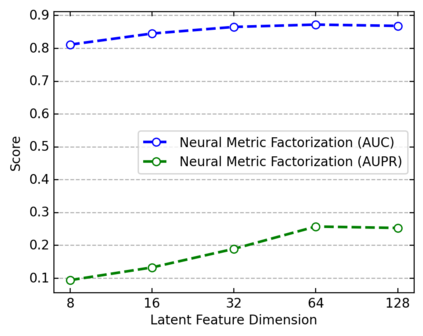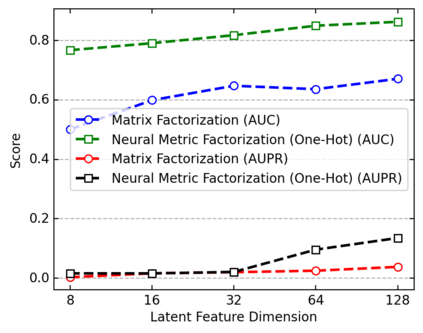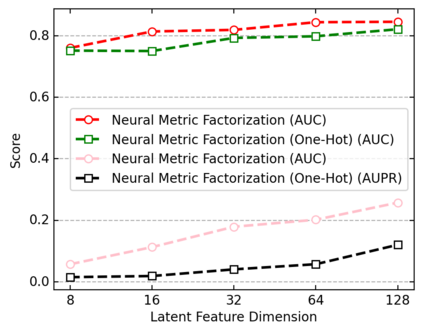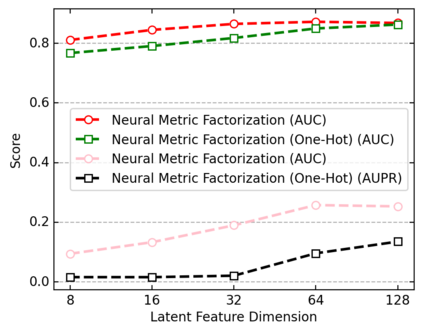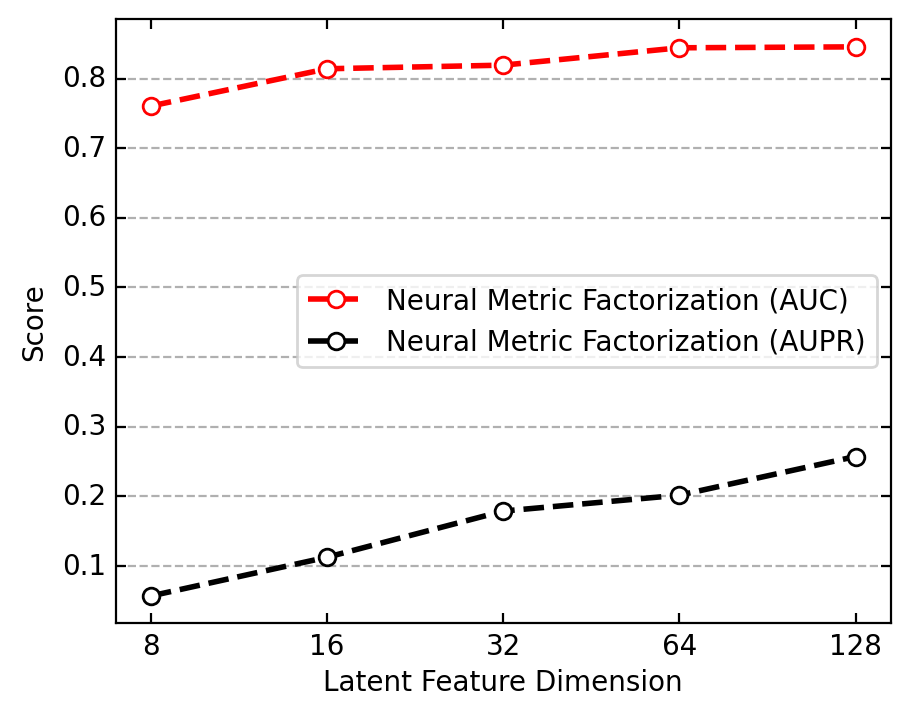Computational drug repositioning aims to discover new therapeutic diseases for marketed drugs and has the advantages of low cost, short development cycle, and high controllability compared to traditional drug development. The matrix factorization model has become the cornerstone technique for computational drug repositioning due to its ease of implementation and excellent scalability. However, the matrix factorization model uses the inner product operation to represent the association between drugs and diseases, which is lacking in expressive ability. Moreover, the degree of similarity of drugs or diseases could not be implied on their respective latent factor vectors, which is not satisfy the common sense of drug discovery. Therefore, a neural metric factorization model (NMF) for computational drug repositioning is proposed in this work. We novelly consider the latent factor vector of drugs and diseases as a point in the high-dimensional coordinate system and propose a generalized Euclidean distance to represent the association between drugs and diseases to compensate for the shortcomings of the inner product operation. Furthermore, by embedding multiple drug (disease) metrics information into the encoding space of the latent factor vector, the information about the similarity between drugs (diseases) can be reflected in the distance between latent factor vectors. Finally, we conduct wide analysis experiments on two real datasets to demonstrate the effectiveness of the above improvement points and the superiority of the NMF model.
翻译:此外,药物或疾病的相似程度不能隐含在它们各自的潜在要素矢量上,这不符合药物发现的共同感。因此,在这项工作中,提出了计算药物重新定位的神经指数化模型(NMF),作为计算药物重新定位的基础方法,因为其实施容易,而且缩放性极强。不过,矩阵要素化模型利用内在产品操作来代表药物和疾病之间的联系,而这种联系缺乏直观的能力。此外,药物或疾病之间的相似程度不能隐含在它们各自的潜在要素矢量上,这不符合药物发现的共同感。因此,在这项工作中,提出了计算药物和疾病重新定位的神经指数化模型(NMMF),这是计算药物和疾病重新定位的基础技术,因为其易于执行,而且易于缩放。我们新把药物和疾病的潜在要素矢量作为高度协调系统的一个点,并提出一种普遍的Euclidean距离,以代表药物和疾病之间的关联,以弥补其内在产品操作的缺陷。此外,将多种药物(疾病)指标信息嵌入潜在要素的编码空间中,关于药物之间相似性(悬殊性)的信息可以反映我们最后的矢量分析。


